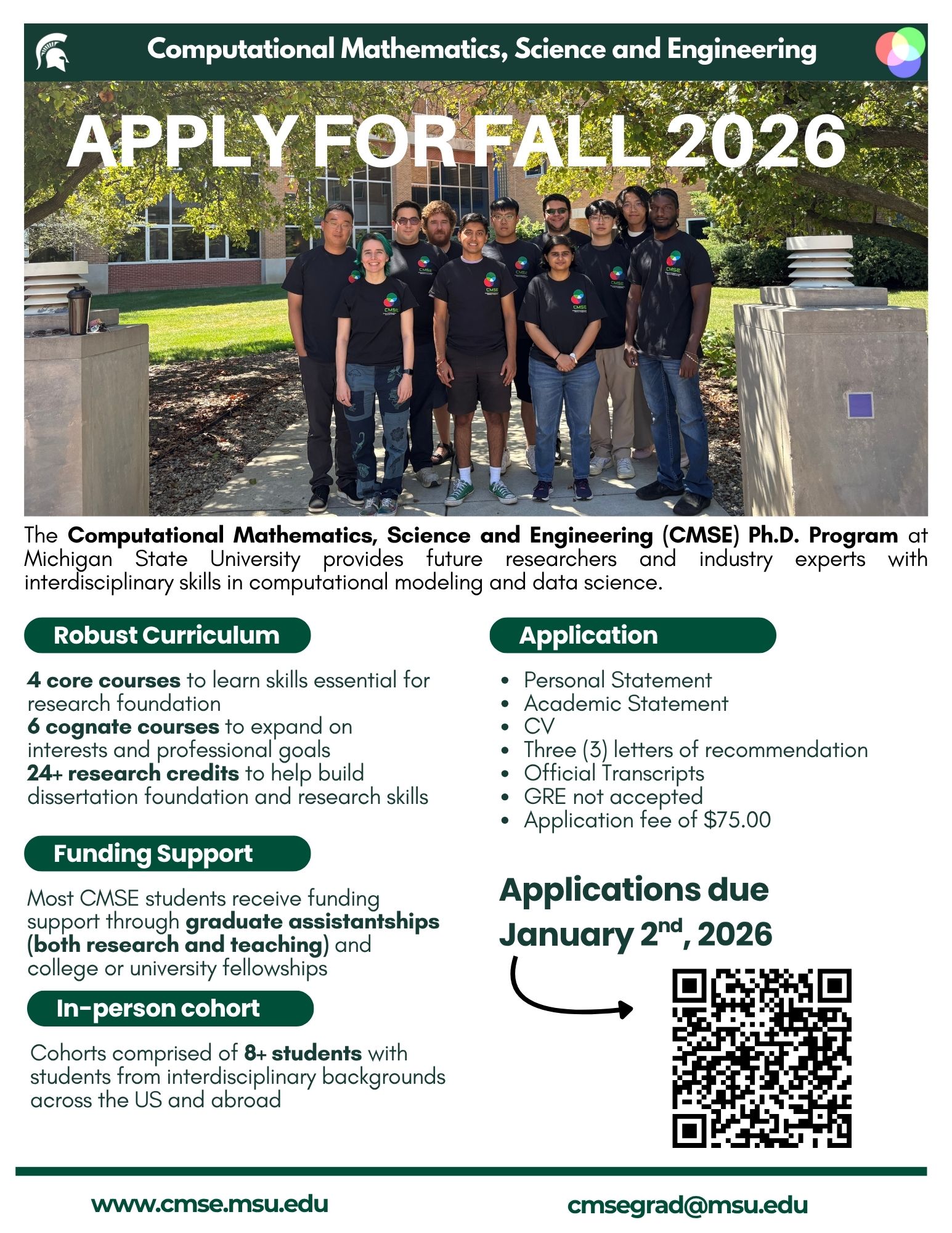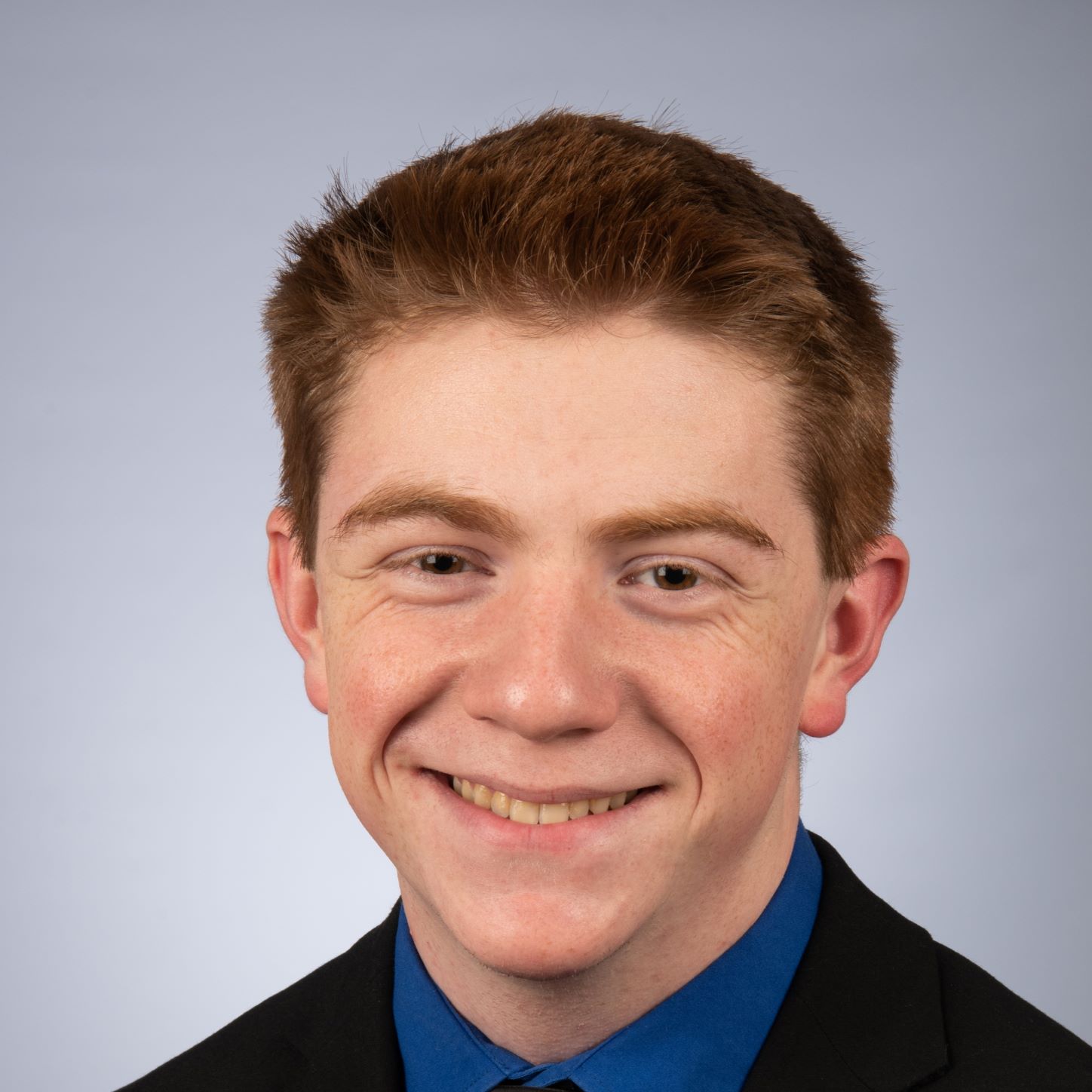Dissertation Defense of CMSE Stephen White
Department of Computational Mathematics, Science & Engineering
Michigan State University
Dissertation Defense Notice
Monday, April 21st, 10am, EB 1502/3
An Involution Satisfying Particle-in-Cell Method
By Stephen White
Abstract:
This thesis presents a new Particle-in-Cell method for numerically simulating plasmas
under the Vlasov-Maxwell system. Maxwell’s equations and the Newton-Lorentz force
are both recast in terms of vector and scalar potentials under the Lorenz gauge. This
results in a set of decoupled wave equations governing the potentials and a Hamiltonian
system with a generalized momentum formulation governing the particles. The Particle-in-Cell
framework for solving a plasma system requires two main components, a method for updating
the fields and a method for updating the particles of the system.
The first part of this thesis introduces the Method of Lines Transpose, or MOLT, as
a way of solving partial differential equations in general and the wave equation in
particular. Additionally it introduces a new particle pusher, the Improved Asymmetrical
Euler Method, that is a modification of a previously existing method. We deploy these
two techniques in the Particle-in-Cell framework. In this section in particular MOLT
employs a dimensional splitting algorithm, solving a set of one dimensional boundary
value problems using a Green’s function. This will all be done using one particular
temporal discretization scheme, the first order Backward Difference Formula. Numerical
results are shown to give evidence for the quality of these techniques, though it
is noteworthy that the combination of this wave solver and particle pusher does not
satisfy the Lorenz gauge condition, nor does it satisfy the involutions of Maxwell’s
equations, otherwise known as Gauss’s laws.
The second part of this thesis fills this lacuna, suggesting two ways for doing so.
First it will consider theory to connect satisfaction of the continuity equation with
satisfaction of the Lorenz gauge. It will consider in particular a way of satisfying
this theory with multi-dimensional Green’s functions, eschewing the dimension splitting
of the first part. It will additionally consider the solution of the boundary value
problems via other numerical techniques such as the Fast Fourier Transform or Finite
Difference approach, ultimately choosing these for simplicity. The second approach
will consider a gauge correction technique. It will be shown that both of these preserve
the gauge, but the first method will additionally satisfy the involutions of Maxwell’s
equations. In a similar manner to the first part, it will do so using the first order
Backward Difference Formula as the temporal discretization scheme. Numerical evidence
will be given to support the theory developed.
The third part of this thesis will generalize the theory connecting the satisfaction
of the continuity equation with satisfaction of the Lorenz gauge and, in most cases,
with Gauss’s Laws. It will extend this theory to not only all orders of the Backward
Difference Formulation, but to a family of second order time centered methods, arbitrary
stage diagonally implicit Runge-Kutta methods, and all orders of AdamsBashforth methods.
In all but the diagonally implicit Runge-Kutta methods, Gauss’s laws will be shown
to be satisfied if the Lorenz gauge is. Once again numerical evidence will be given
to support this.
Finally some future projects will be suggested to capitalize on this work.
Committee Members:
Andrew Christlieb (chair)
Brian O’Shea
John Verboncoeur
Peng Zhang



